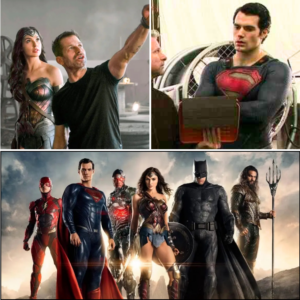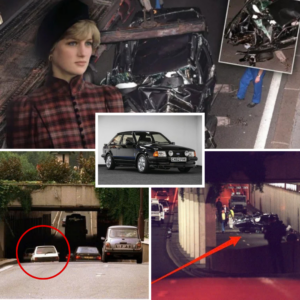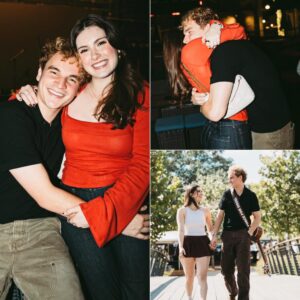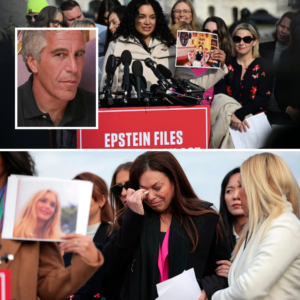In the high-octane world of Hollywood blockbusters, few names are as synonymous with death-defying stunts as Tom Cruise. For decades, the Mission: Impossible franchise has captivated audiences with its jaw-dropping action sequences, each more audacious than the last. From scaling the Burj Khalifa in Ghost Protocol to clinging to the side of a taking-off plane in Rogue Nation, Cruise has redefined what it means to be an action star, pushing the boundaries of physical performance with a relentless commitment to authenticity. But in 2018’s Mission: Impossible – Fallout, a stunt so perilous came along that even Cruise, the ultimate adrenaline junkie, drew a line—not for himself, but for his co-star, Henry Cavill. This is the story of the HALO jump, the stunt Cavill begged to perform, and the moment Cruise looked him in the eye and said, “Henry, I can’t let you do this.”
What makes this moment so compelling is not just the stunt itself—a High Altitude, Low Opening (HALO) jump from a military cargo plane at 25,000 feet—but the dynamic between two of Hollywood’s most physically committed actors. Cavill, known for his chiseled physique and portrayal of Superman, was no stranger to action. Yet, Cruise, the maestro of Mission: Impossible’s stunt spectacle, deemed this particular feat too dangerous for anyone but himself. This article delves into the heart of this cinematic showdown, exploring the HALO jump’s complexity, the camaraderie and rivalry between Cruise and Cavill, and the broader implications of their commitment to practical stunts in an era dominated by CGI.
The HALO Jump: A Stunt Like No Other
To understand why Cruise barred Cavill from the HALO jump, one must first grasp the sheer audacity of the stunt. A HALO jump is not your average skydive. Used primarily by military special forces, it involves leaping from an aircraft at extreme altitudes—typically 25,000 to 30,000 feet—and free-falling at speeds exceeding 200 miles per hour before deploying a parachute at a dangerously low altitude, often just a few thousand feet above the ground. The technique requires precision, specialized training, and nerves of steel, as even a minor miscalculation can result in catastrophic failure. In Mission: Impossible – Fallout, the HALO jump serves as a pivotal sequence, with Ethan Hunt (Cruise) and CIA operative August Walker (Cavill) plummeting through a storm above Paris to infiltrate a secret meeting.
The stunt’s execution was a logistical marvel. Cruise, who famously performs his own stunts, underwent over a year of preparation, including hundreds of hours of training and 106 jumps to capture just three usable takes. The sequence was filmed at dusk from a Boeing C-17 Globemaster III, a massive military transport plane, adding to the visual drama. The actors wore oxygen masks to survive the thin air at such altitudes, and the choreography demanded split-second timing to avoid collisions during free fall. Director Christopher McQuarrie described it as one of the most complex stunts in the franchise’s history, requiring not just physical prowess but a deep understanding of aerodynamics and teamwork.
For Cruise, the HALO jump was the culmination of his relentless pursuit of authenticity. He trained in wind tunnels, mastered parachute deployment, and even learned to operate specialized cameras to capture the sequence in-camera, minimizing the need for digital effects. The result is a heart-pounding scene that feels visceral and real, a testament to Cruise’s mantra that audiences can “feel the difference” when stunts are performed practically. But for Cavill, who had thrown himself into every other stunt in the film—from brutal fistfights in a Paris nightclub to clinging to a helicopter in subzero temperatures—the HALO jump represented the ultimate challenge, one he was desperate to conquer.
Henry Cavill’s Quest for Action Stardom
Henry Cavill is no slouch when it comes to physical performance. By the time he joined Mission: Impossible – Fallout as the villainous August Walker, he had already cemented his status as a Hollywood action hero. His portrayal of Superman in Man of Steel and Batman v Superman showcased his ability to embody larger-than-life characters, even if much of the action relied on green screens and wires. In Fallout, Cavill saw an opportunity to prove himself in the gritty, practical world of Mission: Impossible, where stunts are performed in real environments with real consequences.
Cavill embraced the challenge with gusto. He underwent extensive fight training for the film’s iconic bathroom brawl, where his character’s “arm reload” gesture became a viral sensation. He spent weeks hanging out of a helicopter in freezing New Zealand valleys, battling subzero winds while firing prop machine guns. His commitment was so intense that it sparked the infamous “MustacheGate,” when his Fallout facial hair caused a $25 million CGI headache for Justice League reshoots. Cavill’s dedication was undeniable, and he relished the chance to match Cruise’s intensity. “I saw it as an opportunity, and I wanted all in from the beginning,” he told Yahoo Entertainment.
But the HALO jump was different. On the day of the shoot, Cavill, kitted out with a parachute and fresh from wind tunnel training, pleaded with Cruise: “I’m wearing a parachute, I’ve got some wind tunnel training, surely I can just jump?” His enthusiasm was palpable, driven by a mix of adrenaline and a desire to prove he could hang with the best. For Cavill, the jump wasn’t just a stunt—it was a bucket-list moment, a chance to experience the “magic” of leaping from a C-17 at dusk. Yet, Cruise, with a sincerity that reflected both empathy and authority, shut him down.
Tom Cruise’s Veto: A Matter of Life and Death
Cruise’s decision to ban Cavill from the HALO jump wasn’t about ego or gatekeeping—it was about safety. As he explained to Cavill, “Henry, I know exactly how you feel. I get it, you’ve done every single stunt in the movie so far, but this one I can’t let you do. It needs specific training.” The HALO jump required not just physical fitness but months of specialized preparation to master the nuances of high-altitude free fall, oxygen management, and mid-air choreography. A single mistake could result in a collision, a tangled parachute, or worse, endangering not just Cavill but Cruise and the entire stunt team.
Cruise’s concern was grounded in the stunt’s inherent dangers. He told Cavill, “If you do, the chances are that you will kill me and everyone else in the process.” The statement, though dramatic, was no exaggeration. The HALO jump involved multiple performers falling in close proximity at breakneck speeds, requiring precise coordination to avoid disaster. Cruise had spent over a year honing these skills, while Cavill’s wind tunnel training, though impressive, was insufficient for the task. As Cavill later admitted to USA Today, the thought of being “the guy that killed Tom Cruise” after decades of the Mission: Impossible franchise was enough to make him concede.
This moment highlights Cruise’s dual role as both performer and protector on set. Known for his hands-on approach to producing, Cruise takes responsibility for the safety of his cast and crew, even as he pushes himself to the brink. His own history of injuries—such as breaking his ankle during a building jump in Fallout—underscores the risks he’s willing to take, but also his awareness of the stakes. By barring Cavill, Cruise wasn’t just protecting his co-star; he was safeguarding the entire production.
The Dynamic Between Cruise and Cavill
The interaction between Cruise and Cavill over the HALO jump reveals a fascinating dynamic: a blend of mutual respect, friendly rivalry, and a shared passion for pushing limits. Off-screen, the two actors have spoken highly of each other. Cavill has called Cruise “superhuman,” marveling at his recovery from the ankle injury that briefly halted Fallout’s production. “He concentrates really hard and he heals,” Cavill told interviewers, adding, “He’s a machine. I have a lot of respect for the man.” Cruise, in turn, praised Cavill’s “arm reload” move, calling it “awesome” and encouraging him to repeat it during filming.
Their on-screen chemistry as Ethan Hunt and August Walker is equally compelling. Cavill’s towering, muscular presence contrasts with Cruise’s lean, agile frame, creating a visual and narrative tension that elevates the film. While Hunt relies on cunning and teamwork, Walker’s brute force and ruthlessness make him a formidable foe. The HALO jump, where their characters must work together despite mutual distrust, encapsulates this dynamic. By performing the stunt himself, Cruise ensured the scene’s authenticity, while Cavill’s stunt double seamlessly filled in, maintaining the illusion of Walker’s involvement.
Yet, Cavill’s disappointment was palpable. He described the HALO jump as “one of the saddest tales of the movie” for him, a rare moment of vulnerability from an actor known for his stoic professionalism. His lighthearted recounting of the story during press tours—joking about not wanting to be “the guy that killed Tom Cruise”—shows his ability to laugh off the rejection, but also hints at the sting of being sidelined. For Cavill, the Mission: Impossible experience was a chance to step out of Superman’s shadow and into the gritty reality of practical stunts, and the HALO jump was the one that got away.
The Bigger Picture: Practical Stunts in a CGI World
The HALO jump controversy isn’t just a tale of two actors—it’s a microcosm of the Mission: Impossible franchise’s commitment to practical effects in an industry increasingly reliant on digital wizardry. Cruise’s insistence on performing his own stunts stems from a belief that authenticity resonates with audiences. “You can feel the difference,” he’s said in interviews, and the HALO jump is a prime example. Shot with minimal CGI, the sequence immerses viewers in the terror and exhilaration of free fall, a feat no green screen could replicate.
Cavill’s eagerness to join Cruise in this endeavor reflects a broader trend among actors to embrace physicality in their roles. Stars like Rebecca Ferguson, Simon Pegg, and Hayley Atwell have all undergone rigorous training for Mission: Impossible’s demanding action scenes, inspired by Cruise’s example. But the HALO jump’s exclusivity underscores the line between ambition and expertise. While Cavill was game for the challenge, Cruise’s veto was a reminder that some stunts require a level of preparation few can match.
This commitment to practical stunts also raises questions about the future of action cinema. As CGI becomes more sophisticated, studios face pressure to prioritize safety and cost over authenticity. Yet, the Mission: Impossible franchise continues to thrive by betting on the opposite: that audiences crave the real thing. Cruise’s willingness to risk life and limb—and his decision to protect Cavill from doing the same—embodies this ethos, ensuring that Fallout remains a high-water mark for practical action filmmaking.
Conclusion: A Tale of Respect and Restraint
The story of Tom Cruise banning Henry Cavill from the HALO jump is more than a behind-the-scenes anecdote—it’s a testament to the passion, professionalism, and calculated risk-taking that define the Mission: Impossible franchise. For Cavill, the rejection was a bittersweet moment, a chance to prove himself thwarted by the harsh realities of a stunt too dangerous for all but the most prepared. For Cruise, it was a rare instance of pulling rank, not out of ego, but out of a deep sense of responsibility to his team and his craft.
As audiences, we’re left with a sequence that thrills not just because of its spectacle, but because of the human stories behind it: Cruise’s relentless drive, Cavill’s infectious enthusiasm, and the unspoken bond between two actors united by their love of the game. The HALO jump in Mission: Impossible – Fallout stands as a monument to what’s possible when talent, training, and trust converge—even if, for one actor, it remained just out of reach. In the end, Cruise’s words to Cavill—“I can’t let you”—echo as both a protective decree and a nod to the high stakes of their shared mission, one that continues to captivate audiences worldwide.




